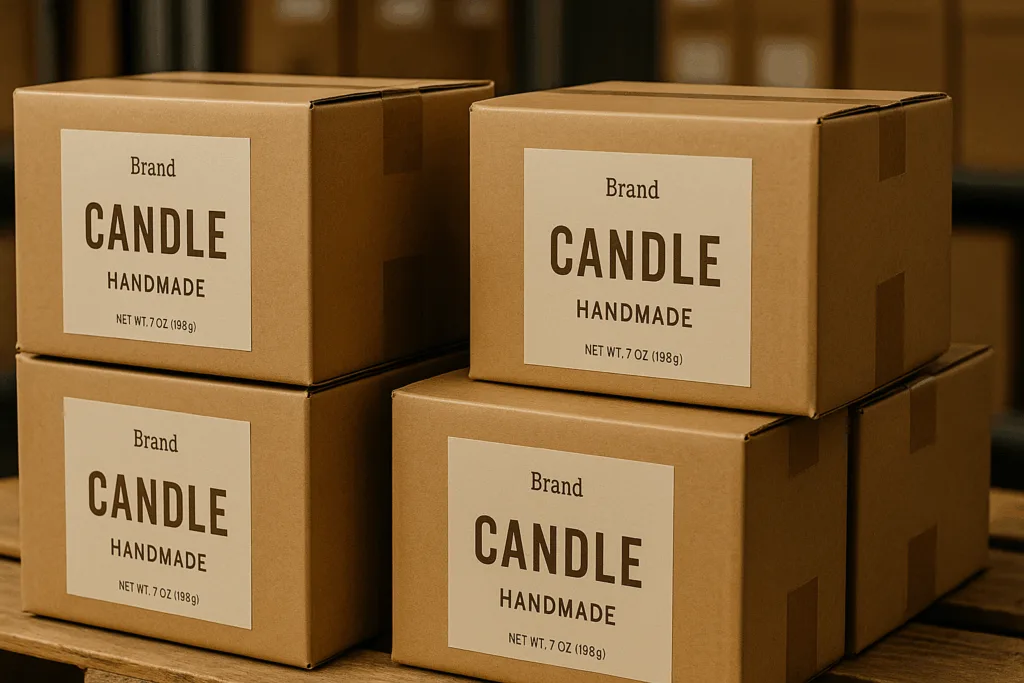
Introduction: Understanding the Fragility Behind the Glow
The candle business often seems romantic and effortless from the outside—a world filled with fragrant wax, elegant jars, and the soft dance of firelight. Yet behind that warm glow lies a complex operation that demands precision, strategy, and resilience. For entrepreneurs entering or scaling in this market, understanding the weaknesses of a candle business is essential to survive and thrive.
This guide offers a complete, in-depth breakdown of the common weaknesses found in candle businesses—from production bottlenecks and cash flow hurdles to marketing challenges and seasonal demand fluctuations. By dissecting each aspect, entrepreneurs can learn how to anticipate issues, mitigate risks, and build stronger, more sustainable candle brands.
1. Production and Operational Weaknesses
1.1 Limited Scalability and Production Bottlenecks
Most candle businesses begin with small-batch, artisanal production. While this approach ensures quality and craftsmanship, it also limits scalability. Hand-pouring, scent blending, and curing take time, and the process cannot always be easily automated without sacrificing quality.
Key issues include:
- Limited melting and pouring capacity.
- Inconsistent curing times based on humidity and temperature.
- Bottlenecks in labeling, packing, and shipping during peak seasons.
Implications: When demand increases, businesses may struggle to meet large or wholesale orders, leading to lost opportunities and damaged client relationships.
Solutions: Invest gradually in scalable equipment like large-capacity melters and automated pouring systems. Standardize your formulations and batching processes to reduce variability. Outsource or hire part-time staff for seasonal production surges.
1.2 Cash Flow and Inventory Management Challenges
Candle manufacturing requires upfront investment in raw materials—wax, fragrance oils, wicks, containers, and packaging. The cost of these materials can quickly add up, especially when producing multiple SKUs for different collections.
Why this matters:
- Overstocking ties up capital and storage space.
- Understocking leads to missed sales opportunities during high demand.
- Unused fragrances or seasonal stock may expire or lose scent intensity.
Solutions: Implement demand forecasting models based on historical data and seasonality. Negotiate supplier terms to balance cash flow. Use inventory software to track slow-moving SKUs and adjust production accordingly.
1.3 Safety, Compliance, and Quality Control
Candle making involves handling flammable materials and chemicals. Poor safety practices can result in workplace accidents or product recalls.
Common weaknesses include:
- Inconsistent wick centering causing tunneling or unsafe flame height.
- Improper labeling that fails to meet regional compliance standards.
- Variations in fragrance oil concentrations that lead to inconsistent scent throw.
Solutions: Establish a formal quality control checklist for each production batch. Train staff in safe wax melting and fragrance handling practices. Ensure compliance with IFRA, ASTM, and relevant regional standards to build customer trust.
2. Market and Competitive Weaknesses
2.1 Saturated and Highly Competitive Market
The candle market is heavily saturated with competitors ranging from home crafters to global brands. Because of this, many products appear similar—glass jars, soy wax, vanilla scent—making it difficult to differentiate.
Challenges:
- Competing with established players that have larger marketing budgets.
- Customer fatigue from repetitive products and scents.
- Price wars driving down profit margins.
Solutions: Identify and dominate a niche. Focus on innovation, such as eco-conscious materials, refillable jars, or themed collections. Develop a strong brand story that emotionally connects with customers—such as sustainability, craftsmanship, or local sourcing.
2.2 Brand Positioning and Differentiation Challenges
Candle products often appear generic when not backed by a strong identity. Without a cohesive brand message or design, even high-quality products may get overlooked.
Symptoms of weak positioning:
- Inconsistent packaging and visual branding.
- Lack of emotional appeal or storytelling in marketing.
- Poor social media engagement or unclear target audience.
Solutions: Develop a clear brand DNA. Highlight what sets you apart—such as hand-poured craftsmanship, minimalist Scandinavian design, or vegan waxes. Invest in professional packaging and photography to elevate perceived value.
2.3 Dependency on Trends and Seasonality
Candles are highly seasonal products. Sales typically spike during the holidays and dip in the summer months, creating unstable cash flow patterns.
Consequences:
- Seasonal dependency leads to uneven revenue.
- Overstocking for holidays can result in unsold inventory.
- Retail partners may reduce orders outside gifting seasons.
Solutions: Expand your product line to include non-seasonal items like diffusers, room sprays, or wellness products. Promote candles as part of self-care or meditation routines year-round. Offer subscription boxes or custom corporate gifting options to stabilize income.
3. Supply Chain and Material Weaknesses
3.1 Raw Material Cost Volatility and Supply Disruptions
Candle materials such as soy wax, essential oils, and glass jars are subject to global price fluctuations. Geopolitical issues or transportation delays can lead to stock shortages.
Example: A spike in soy prices due to crop failure or global trade tensions can dramatically increase costs overnight.
Solutions: Build long-term relationships with multiple suppliers. Secure fixed-price contracts when possible. Maintain a buffer inventory of core materials without overstocking. Explore alternative waxes like coconut or rapeseed wax for price stability.
3.2 Environmental and Sustainability Pressures
Consumers increasingly demand eco-friendly products. Brands relying on paraffin wax or non-recyclable packaging face reputational risks.
Weaknesses include:
- Use of synthetic fragrances that may emit VOCs.
- Plastic packaging or non-biodegradable shipping materials.
- Lack of transparency in ingredient sourcing.
Solutions: Switch to sustainable waxes like soy, coconut, or beeswax. Use recyclable glass jars and paper-based labels. Highlight carbon-neutral shipping and eco-certified suppliers in marketing materials to attract conscious consumers.
4. Marketing, Sales, and Distribution Weaknesses
4.1 Customer Acquisition and Brand Trust
Many candle businesses underestimate the marketing required to attract and retain customers. Without effective branding, content, and visibility, growth stagnates.
Key issues:
- Limited marketing budget for ads or influencer partnerships.
- Poor SEO and online discoverability.
- Weak product photography and storytelling.
Solutions: Invest in organic marketing channels—blog content, Pinterest boards, and email campaigns. Collaborate with home décor or wellness influencers. Focus on building brand trust through customer reviews and consistent communication.
4.2 Logistics, Fulfillment, and Shipping Challenges
Candles are fragile and heavy, which makes shipping costly and complicated. Breakages during delivery can lead to dissatisfied customers and financial losses.
Weaknesses include:
- Insufficient packaging protection.
- High international shipping costs.
- Customs issues for fragrance imports or exports.
Solutions: Design sturdy, eco-friendly packaging that protects without adding excess weight. Use warehouse partnerships in key regions (e.g., North America, EU) to reduce delivery times and costs. Provide tracking and insurance for bulk shipments.
5. Strategic and Growth-Related Weaknesses
5.1 Limited Innovation or Product Line Fatigue
Repeating the same scents and designs can make your brand feel stale. In a visual and sensory market, innovation drives excitement.
Symptoms:
- Repetitive seasonal releases.
- Lack of collaboration or limited-edition products.
- Declining customer engagement over time.
Solutions: Experiment with new fragrance blends, introduce refillable jars, or collaborate with local artists. Offer personalization or custom labels for B2B clients. Innovation keeps both consumers and retail partners engaged.
5.2 Export and B2B Complexity
For candle manufacturers expanding into international or wholesale markets, complexities multiply. Export logistics, certifications, and payment terms all present challenges.
Challenges:
- Compliance with international standards (e.g., REACH, CLP, IFRA).
- Extended lead times for custom or bulk orders.
- Cultural differences in scent preferences and packaging styles.
Solutions: Study target market regulations before entry. Maintain global certifications and transparent documentation. Offer sample kits to international buyers to test scents and packaging quality before large orders.
6. Financial and Business Model Weaknesses
6.1 Margin Pressure and Rising Costs
While candles can command high perceived value, actual profit margins may be thinner than expected after accounting for materials, packaging, shipping, and marketing.
Hidden costs:
- Returns or damaged shipments.
- Discounting during slow seasons.
- Marketplace fees (Amazon, Etsy, Shopify).
Solutions: Calculate your cost per candle including every hidden expense. Offer bundle deals or subscription models to increase order value. Upsell accessories like candle care kits or refills to improve margins.
6.2 Founder Overload and Burnout
Entrepreneurs often handle everything—production, marketing, customer service, and logistics—leading to exhaustion and inefficiency.
Consequences:
- Poor work-life balance.
- Missed growth opportunities.
- Declining product quality.
Solutions: Delegate tasks, automate repetitive processes, and document SOPs (Standard Operating Procedures). Hire freelance help for design, photography, or bookkeeping. Focus your time on growth and strategy rather than daily operations.
7. Summary Table of Common Weaknesses
| Category | Weakness | Impact | Mitigation Strategy |
|---|---|---|---|
| Production & Ops | Limited scalability | Missed large orders | Invest in automation, streamline workflow |
| Production & Ops | Cash flow issues | Financial instability | Forecast demand, negotiate supplier terms |
| Production & Ops | Safety risks | Accidents or recalls | Implement QA and compliance protocols |
| Market & Competition | Oversaturation | Price pressure | Focus on niche branding and storytelling |
| Market & Competition | Weak differentiation | Low visibility | Build unique scent identity and visuals |
| Market & Competition | Seasonality | Revenue dips | Diversify into year-round products |
| Supply Chain | Material cost volatility | Margin erosion | Use multiple suppliers, stable contracts |
| Supply Chain | Sustainability gaps | Reputation risk | Adopt eco materials, highlight transparency |
| Marketing & Sales | Weak online presence | Slow growth | Optimize SEO, influencer and email marketing |
| Marketing & Sales | Logistics issues | Damaged goods | Improve packaging, regional warehousing |
| Strategy & Growth | Innovation fatigue | Decline in interest | Release new scents, collaborations |
| Strategy & Growth | Export complexity | Regulatory delays | Obtain global certifications |
| Financial | Margin pressure | Reduced profit | Bundle products, control hidden costs |
| Financial | Burnout | Decline in efficiency | Delegate, automate, document SOPs |
8. Industry Case Example: Overcoming Weaknesses with Smart Systems
A mid-sized European candle company once faced scalability and seasonality challenges. Initially relying on hand-poured soy candles, they struggled to meet a large wholesale order from a U.S. retailer. Instead of rejecting the order, the company invested in semi-automatic pouring equipment, hired seasonal staff, and created a 12-month scent calendar to stabilize cash flow. Within a year, their production capacity tripled, and the brand expanded into two new markets.
The lesson? Weaknesses often reveal where efficiency and planning can transform a fragile craft business into a scalable, professional operation.
9. Strategies to Transform Weaknesses into Strengths
- Automation & Technology: Adopt digital tools for inventory, forecasting, and fulfillment.
- Product Diversification: Introduce complementary products to mitigate seasonality.
- Sustainability Commitment: Turn eco-practices into a brand differentiator.
- Brand Storytelling: Build emotional resonance with consumers.
- Strategic Partnerships: Collaborate with retailers or lifestyle influencers.
- Continuous Innovation: Stay ahead with limited editions and trend insights.
10. Conclusion: Building a Stronger Candle Business Framework
Every business has weaknesses—but in the candle industry, those weaknesses are often reflections of passion without planning. Recognizing challenges like scalability, cash flow, seasonality, and competition is the first step toward creating a resilient brand. Entrepreneurs who address these issues early can turn fragility into flexibility, crafting not just beautiful candles but a sustainable, profitable enterprise that continues to shine long after the wax has cooled.
FAQs About the Weaknesses of a Candle Business
Q1: What are the biggest weaknesses of a candle business?
The most common weaknesses include limited scalability, market saturation, cash flow issues, and supply chain volatility. Entrepreneurs must plan for growth and differentiate through innovation and sustainability.
Q2: How can I make my candle business more sustainable?
Use natural waxes like soy or coconut, source recyclable packaging, and offer candle refills. Highlight transparency and eco-certifications in your marketing.
Q3: Why is competition so intense in the candle market?
Low entry barriers allow anyone to start candle-making, creating an oversaturated market. The key is to stand out through branding, scent originality, and customer experience.
Q4: How do I overcome seasonal sales fluctuations?
Diversify your product line with diffusers, room sprays, or wellness candles. Introduce corporate gifting or subscription models to balance cash flow year-round.
Q5: What causes poor scent throw or candle performance?
Improper fragrance ratios, wrong wick sizes, and poor curing times can cause weak scent throw. Consistent testing and quality control solve these issues.
Q6: Is exporting candles difficult?
Yes. Exporting requires compliance with fragrance safety regulations, labeling laws, and customs documentation. Partnering with experienced freight and compliance agents can streamline the process.





